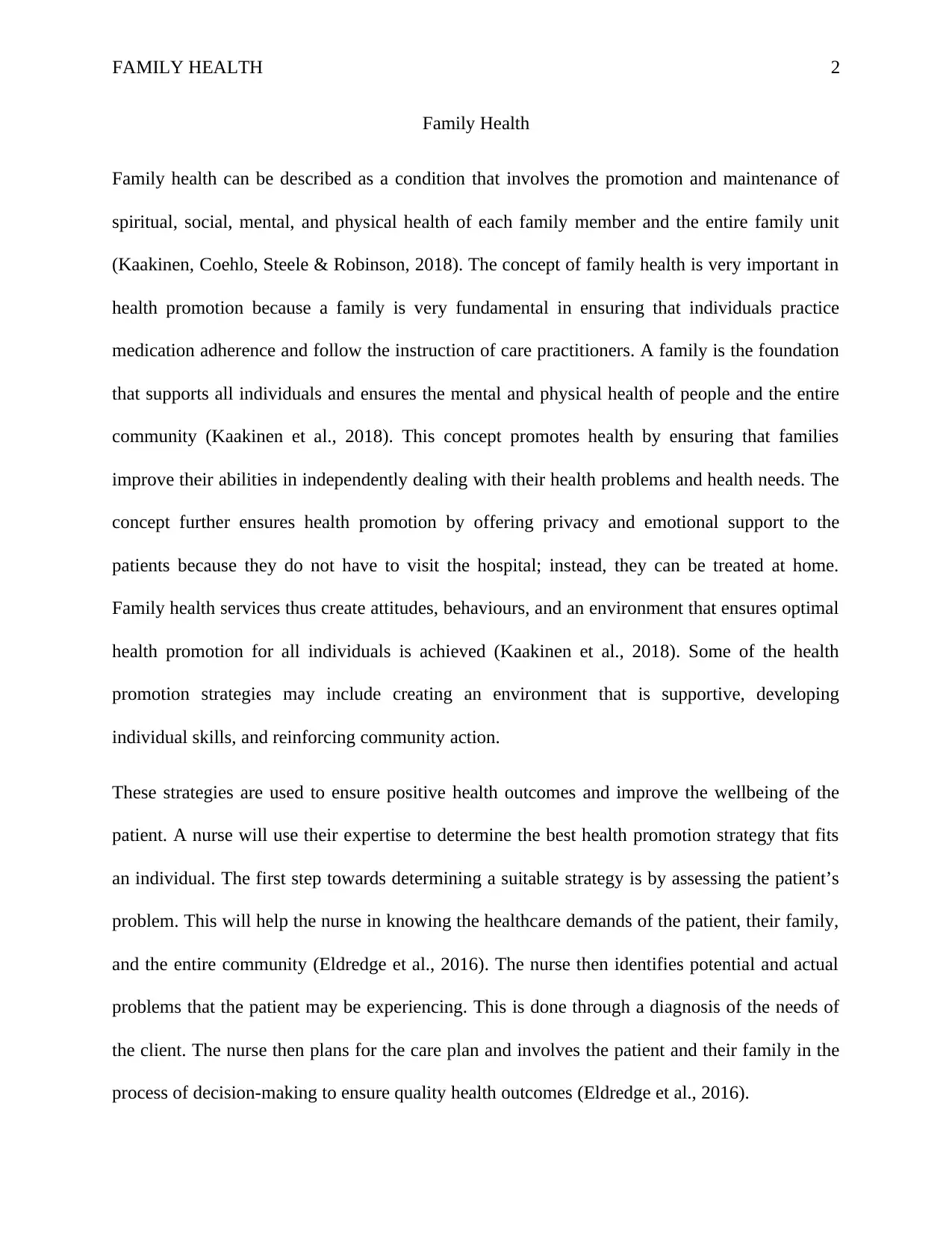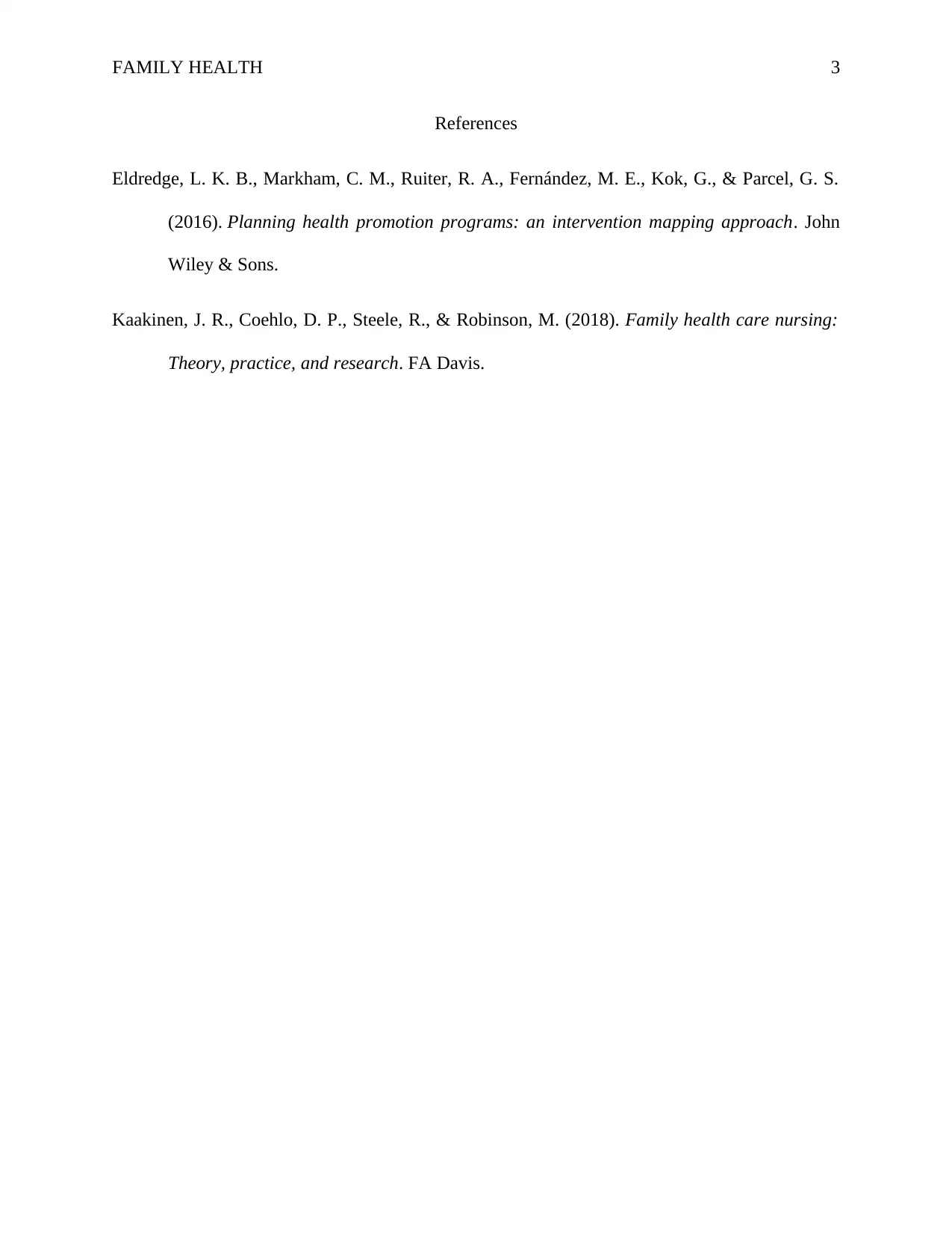Family Health Report: Promoting Wellness and Health Strategies
VerifiedAdded on 2022/11/09
|3
|461
|1
Report
AI Summary
This report focuses on family health, emphasizing its significance in promoting individual and community well-being. It discusses the concept of family health as a cornerstone for ensuring medication adherence, providing emotional support, and creating a supportive environment. The report highlights the importance of health promotion strategies, including fostering supportive environments, developing individual skills, and reinforcing community actions. The role of nurses in assessing patient needs, identifying potential problems, and developing care plans in collaboration with patients and their families is also emphasized. The report references key literature and provides insights into practical applications of family health principles. The content provides a comprehensive overview of family health and its crucial role in healthcare, focusing on strategies and implementation.
1 out of 3










![[object Object]](/_next/static/media/star-bottom.7253800d.svg)